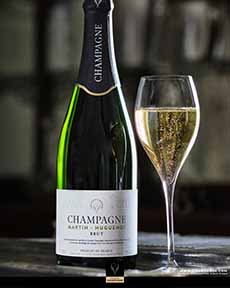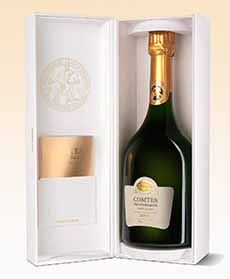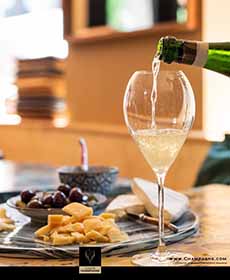Pairing Champagne & Barbecue Plus A Free Champagne Course
|
|
Have you ever considered serving Champagne with barbecue? Neither did we, until the Champagne Bureau U.S. sent us the following suggestion for a Memorial Day celebration. Your crowd may prefer beer or a hearty red wine with barbecue (Barolo, Bordeaux, Cabernet Sauvignon, Malbec Shiraz, Zinfandel). But if you’d like to try something different, take a look at these suggestions. Champagne pairs perfectly with grilling, says the Champagne Bureau, which is the official site of the Comité Champagne. This trade association represents all the grape growers and houses [producers] in the Champagne region of France. We must note that while Champagne is the crème de la crème of sparkling wines, if it’s not in your budget, you can use less pricy bubbly. Check out our list of affordable sparkling wines. > May 16th is National Barbecue Day. Champagne and other sparklers offer a diversity of styles that can be paired with a barbecue menu. If you’d like to learn more about Champagne, you can take the Champagne Massive Open Online Course (MOOC) at your convenience. Study at your own pace, 24/7. The classic version is free and is packed with almost 5 hours of pairing tips and other fascinating facts about the Champagne region and its wines. How long is it? The total course runs for less than 5 hours and covers: Thanks to the 16,200 growers and 360 houses in Champagne that produce such wonderful wines, beloved the world over. > The 6 styles of champagne: Blanc de Blancs, Blanc de Noirs, Non-Vintage, Prestige Cuvée, Rosé, Vintage. > The 7 levels of sweetness: Brut Nature, Extra Brut, Brut, Extra Dry, Dry, Demi-Sec, Doux. ________________ *Although “demi-sec” translates to “half dry” in French, it actually means that it is half as dry as doux, the French word for sweet. †By pressing these red grapes very gently, and removing the skins quickly after pressing, the wine retains its white color. The grape juice is naturally white. Red wine is created by allowing the skins to remain in contact with the juice, imparting their red color. To make a rosé wine, the skins are left for a much shorter time. ‡While the wine they produce is red in color, most of the grape varieties’ skins are black with red or blue hues. Thus, the industry refers to them as black grapes. It is also proper to refer to them as red wine grapes, because they make red wine! |
|
|
|
||




